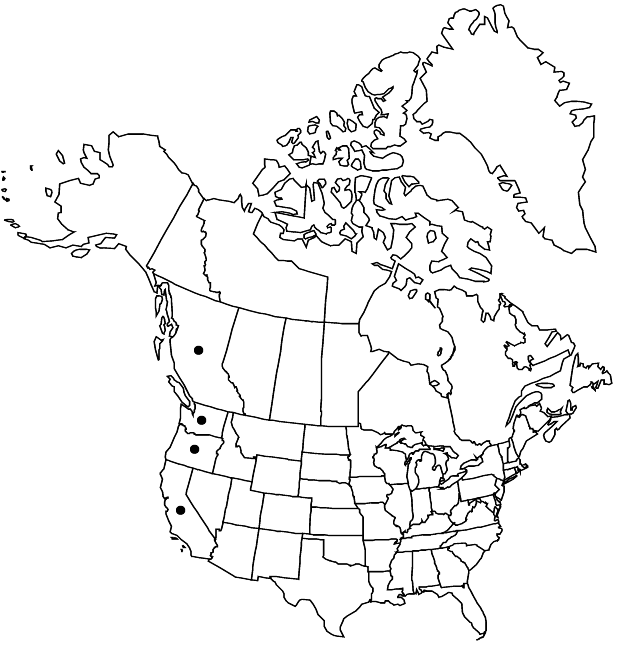Mitella ovalis
Pittonia 1: 32. 1887 ,.
Plants not stoloniferous or, rarely, stoloniferous. Flowering stems 15–35(–40) cm. Leaves: petiole 1.2–8(–11.3) cm, short stipitate-glandular and densely long stipitate-glandular, longer hairs spreading or retrorse, reddish brown; blade cordate-ovate to cordate-oblong, longer than wide, 2.7–7 × 1.5–5.4 cm, margins shallowly 5-, 7- or 9-lobed, doubly crenate-dentate or dentate, glabrous or irregularly ciliate, apex of terminal lobe acute to obtuse, surfaces sparsely short stipitate-glandular and long stipitate-glandular to sparsely long stipitate-glandular along primary veins abaxially, long stipitate-glandular adaxially; cauline leaves absent. Inflorescences 1–3(–6), closely 20–60-flowered, 1(–2) flowers per node, not secund, 15–35(–40) cm, subglabrous or short stipitate-glandular and sparsely long stipitate-glandular proximally, short stipitate-glandular and, rarely, long stipitate-glandular distally. Pedicels 1–2 mm, short stipitate-glandular. Flowers: hypanthium shallowly saucer-shaped, 0.8–1 × 2–3.5 mm; sepals spreading to recurved, greenish, triangular, 0.7–1 × 0.9–1.9 mm; petals greenish yellow, 3–9-lobed, 1.5–2 mm, lobes linear, lateral lobes spreading; stamens 5, opposite sepals; filaments white, 0.1–0.3 mm; anthers 0.1–0.2 × 0.2–0.4 mm; ovary nearly completely inferior; styles divergent, flattened, 0.2–0.3 mm; stigmas 2-lobed. Seeds reddish purple or blackish, 0.8–1.1 mm, pitted. 2n = 14.
Phenology: Flowering Mar–Jul.
Habitat: Moist woods, stream margins, wet banks
Elevation: 0-1500 m
Distribution

B.C., Calif., Oreg., Wash.
Discussion
Mitella ovalis occurs from Vancouver Island and extreme southwest mainland of British Columbia south to Marin County, California.
Selected References
None.